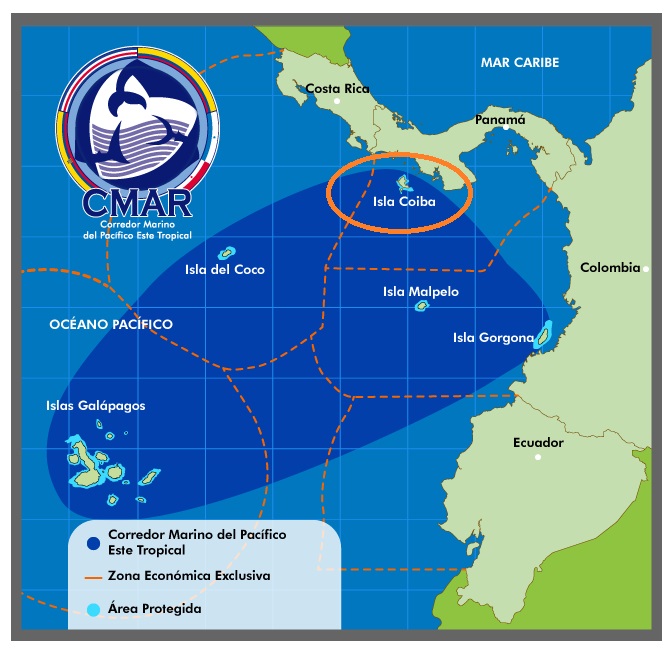Our Diving Area

Panama is an indigenous word FOR abundance of fish and this is, what we see every day in Coiba National Park. The park’s 38 islands offer great ecological and marine diversity, white sand beaches, hardwood tropical forests and wildlife found nowhere else in the world making these islands breathtaking.
Coiba is the northern column of the huge Eastern Pacific Marine Corridor, also known as The Shark Triangle, which is formed by Coiba, Galapagos, Cocos, Malpelo and Gorgona, an important protection zone for migrating mega fauna and one of the world’s most productive marine areas.
In June 2021 Panama has declared another 62.000 km2 of the Coiba Cordillera as a protection zone and is now connected to the Malpelo Protection Area in Colombia.
Most of our trips for certified divers are going to Coiba National Park, which has been declared a national park in 1992 and an UNESCO World Heritage Site in 2005; the park covers an area of 270,125 hectares (667,493 acres), of which more than 80% is ocean. The park also contains the largest coral reef in the tropical Eastern Pacific. Just a short distance off the park’s west coast, at Hannibal Bank and Jicaron, the sea drops down much deeper to several thousand meters. Montuosa, located at the west tip of the National Park’s Special Marine Protection Zone, is the only pelagic island of Panama, rising to the surface from several thousands of meters of deep ocean. Divers can see an incredible abundance of fish and other marine life due to the upwelling of deep seawater and the mixture of different Pacific currents along the rising seafloors.
Coiba is a destination for divers who like to meet the real BIG ocean animals: sharks, rays, whales, turtles and dolphins and PLENTY of schooling PREDATORS (tunas, jacks, snappers, barracudas, spade fish…..) plus COLORFUL reef life (morays, butterfly-, angel-, surgeon-, frogfish, pufferfish, blennies, lobsters…). Some animals are resident, some are migrating with the currents, but there is always a lot going on underwater
